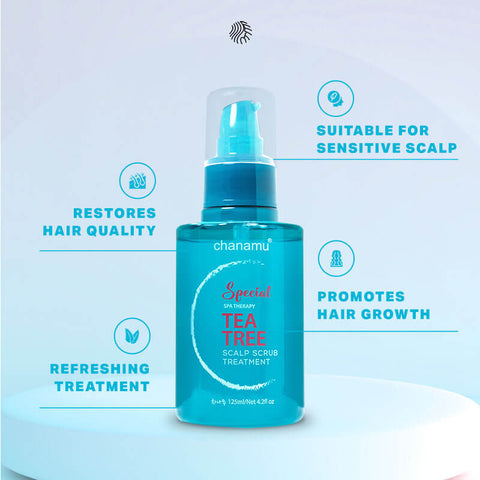Are Scalp Pimples normal?
Scalp acne, scalp pimples or folliculitis, is a common skin condition that occurs when hair follicles become inflamed and form red bumps or whiteheads. However, these can sometimes be painful or uncomfortable. Folliculitis may develop due to multiple a multitude of factors but is usually treated the same as acne on other parts of the body.
Continue with this article to find out how to identify scalp acne, what they’re caused by and how to get rid of them!
Symptoms of scalp acne (but not limited to):
Causes

Clogged pore
Dead cells, sebum, or other material buildup in the hair follicles can block the pores which lead to pimples/acnes. Clogged pores can also cause hyperpigmentation or scarring.

Bacteria infection
Folliculitis is one of the most common bacteria or fungi infection that causes scalp acne through pores or open wounds. Symptoms include rashes and the appearance of white-headed bump. People with medical condition or weakened immune system have a higher risk of developing this type of folliculitis.

Ingrown Hair
Staph infections are caused by Staphylococcus bacteria and occur within ingrown hair. When infected the Staphylococcus bacteria causes mild skin and tissue irritation such as acne, cellulitis, furuncles, and abscess (boil). These usually appear as inflamed, red sore bumps that are swollen and itchy.

Sleep deprivation
The lack of sleep can weaken your immune system, which may affect your body's ability to fight infection and bacteria that builds up on your skin. When you don't get enough sleep, stress hormones can also cause your sebaceous glands to produce more oil. The built up sebum can clog the pores and hair follicles, resulting in pimples.
What can you do about it?
Here are some habits and products that could help you prevent scalp acne!:

Use less Hair products
Excessive use of hair products like gel and hair spray can lead to buildup on the scalp which clogs the pores and hair follicles, resulting in a pimple. Changing your hair care product or reducing your use overall will help.

Using Oil-based products without cleansing
The use of oil-based hair products along with hair follicles clogged with oil and dead skin cells can be a disaster. It is a myth that oils clog your pores. Since oil (sebum) is naturally present on your skin. You may use oil based products safely as long as you remember to cleanse and unclog those pores!

Wash hair regularly
Regularly washing your hair will remove dirt, oil, and hair products that may get stuck/clogged in your pores every day. Likewise, improper or incomplete washing in the long run can lead to the irritation of your hair follicle and the formation of a scalp pimple. Hence, it is important to not only wash your hair but your scalp too (especially if you’re living in a humid country!)

Cleanse your scalp
Sometimes, using just a shampoo may not be effective enough when it comes to washing your scalp. In cases like this we recommend using a scalp scrub such as Chanamu Scalp Scrub Treatment once to twice a week, this can help deeply cleanse your scalp and remove dirt build up.

If you have an oily scalp along with scalp acne we recommend giving Chanamu Scalp Care Tonic a try. You can use this tonic twice a day, the Tea Tree oil inside will help to eliminate germs and bacteria, cleanse the scalp and dry up scalp acne! We recommend using the Chanamu Scalp Care Tonic with the Chanamu Scalp Multivitamin Treatment if you're looking to improve hair growth and scalp circulation.
Hair maintenance starts now with Chanamu, get yours today!
We produce and upload beauty related content on our channel weekly at Hana Story Boutique, so be sure to join us and be part of the beauty community. Additionally, you may follow our social media Instagram, Facebook or YouTube for more updates! See you there!
Source: (1), (2), (3), (4), (5), (6), (7), (8), (9), (10), (11), (12), (13), (14), (15), (16), (17)